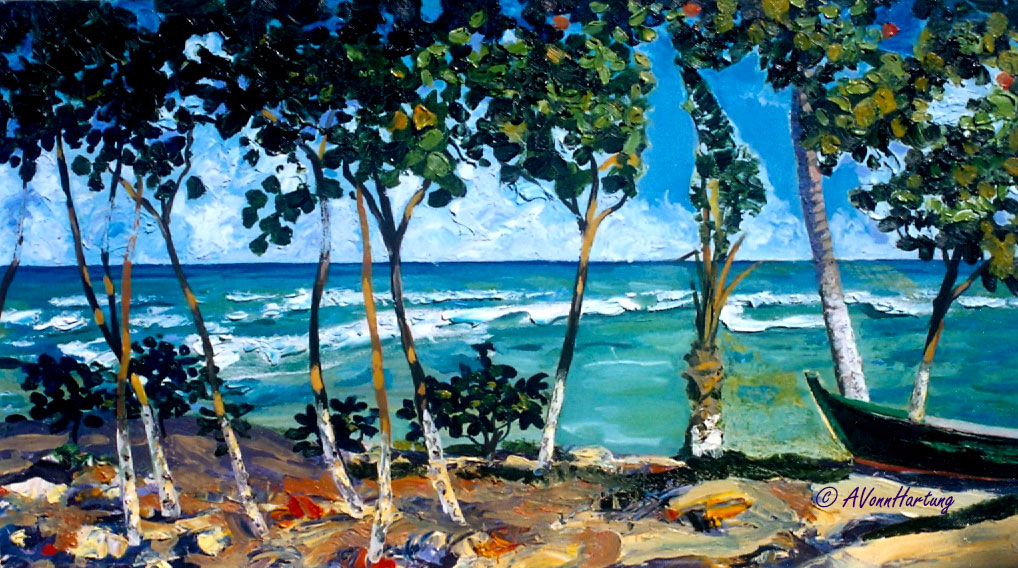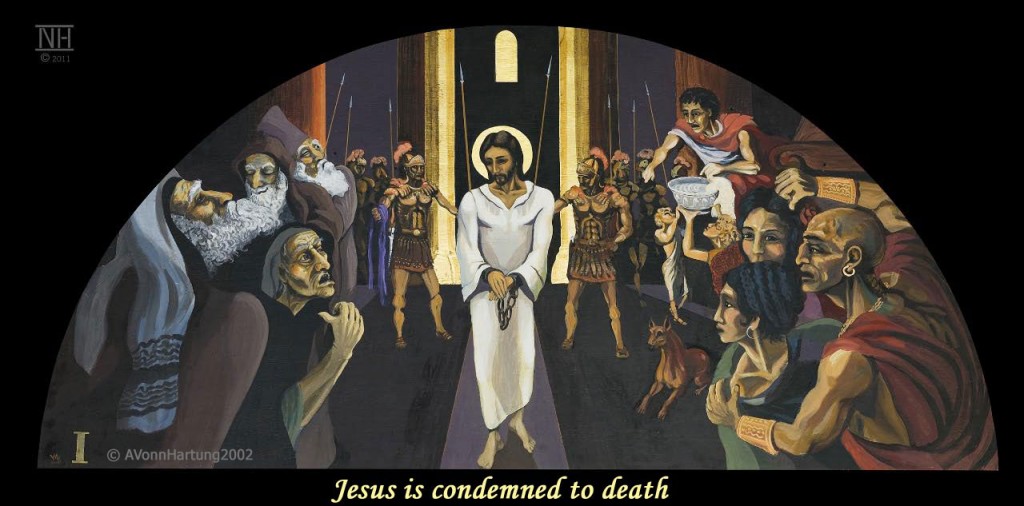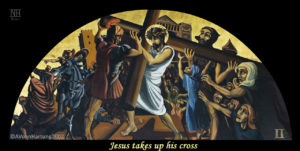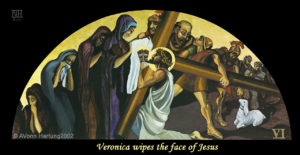Some major works by Catholic artist A.Vonn Hartung
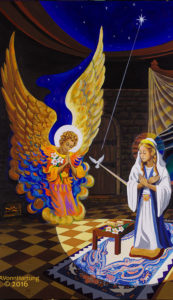
Painting (acrylic) on canvas, 60 x 36-inches. The Angel Gabriel descends in divine glory and declares the message from God the Father. After pondering deep in her heart, the words and their meaning, Mary gives her consent. At that very moment she is filled with the luminous light of grace as she vows to fulfill the will of the Father and to deliver His only Son incarnate as Jesus Christ into the world according to His divine plan for our salvation. The painting is an interpretation of the visions received by Blessed Anne Catherine Emmerich (Augustinian Nun) in 1821, with some added symbolism by the Artist to enhance and clarify the spiritual and prophetic consequences of the Annunciation Event. READ MORE.
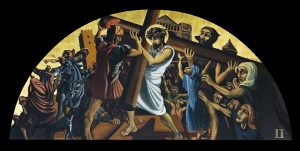
Painting (acrylic) on wood panel, 48 x 96-inches. THESE STATIONS OF THE CROSS paintings show the process of conversion as Jesus was put to the test and tormented. They express a perspective that emphasizes the effect Jesus had on those present during his ordeal of carrying his own cross to his crucifixion on Calvary. As the bystanders are pulled into his suffering, we follow by observing closely, the actual Revelatory conversion of the principal Roman soldier; we see how the outpouring of grief and compassion of others around him begin to melt away his own cruelty and indifference. READ MORE.
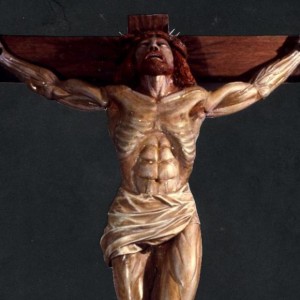
Wood Sculpture, life-size (120 x 50-inches), Linden Wood with Mahogany cross.
From noon until three in the afternoon darkness came over all the land.
About three in the afternoon Jesus cried out in a loud voice, “Eli, Eli, lema sabachthani?”
(“My God, my God, why have you forsaken me?”) Mt 27.
I carved this crucified Christ after an in-depth study of the book, A Doctor at Calvary by Pierre Barbet M.D.,
a forensic pathologist’s analysis of the Holy Shroud of Turin.
It reveals a graphic account of Jesus’s suffering at the hands of the Romans. READ MORE.
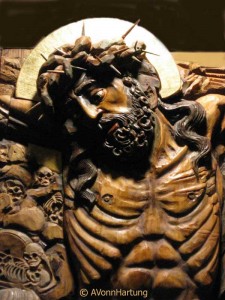
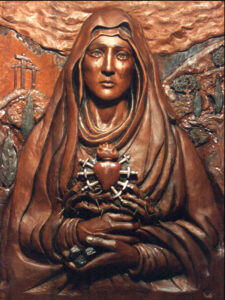
High Relief Wood Sculpture, 33 x 27-inches, Pau Lope wood
Expresses the agony of Jesus through His mother Mary; the betrayal by Judas, the arrest, torturous scourging, trial, carrying of the cross, and finally the agonizing crucifixion and death at Golgotha.
The Sorrowful Mother contemplates the seven sorrows of her life, represented by the seven swords piercing her heart. READ MORE.
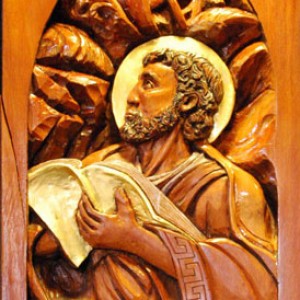
High relief wood sculpture (33 x 12 x 3-inches), one of the six saints carved by A.Vonn Hartung for the Ambo of St. Paul’s Church in Pensacola, Florida. Artistically I have placed St. Luke the Evangelist in the center of his mission; I have conveyed, a feeling of the harmony brought to him through the gift of the Holy Spirit. READ MORE
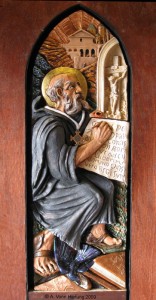
High Relief Ceramic Sculpture (32 x 11 x 3-inches)
Ora et labora (Pray and work)—refers to the Catholic monastic practice of working and praying. St. Benedict viewed prayer and work as partners and believed in combining contemplation with action. St. Benedict is shown here writing; this is significant for two major reasons. READ MORE
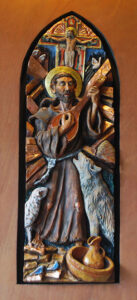
High Relief Ceramic Sculpture (32 x 11 x 3-inches)
St. Francis lived in the Holy Spirit.
He was in love with life and all of God’s Creation.
He brought the Light of Christ to a darkened world! READ MORE
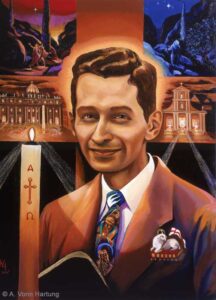
Oil portrait on canvas (34 x 26-inches). Blessed Carlos Manuel Rodríguez was beatified on April 29, 2001, by His Holiness (now Saint) John Paul II. He was the first Puerto Rican, the first Caribbean-born layperson and the first layperson in the history of the United States to be beatified. At the core of Blessed Carlos Manuel Rodriguez’ spirituality (Pope John Paul II said) was his faith in the Resurrection. He promoted the Easter Vigil as the defining moment of Christian spiritual life, repeating often, “We live for that night.” (Vivimos para esa Noche). This portrait hangs in the Hall of Saints at the Pontifical North American College, Vatican, commissioned by Monseñor Roberto González Nieves, Archbishop of Puerto Rico. READ MORE.
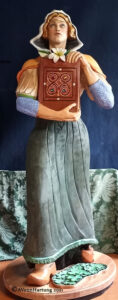
Saint Dymphna, patron saint of mental illness, was martyred in the 7th century for her faith. At 14 years old she was beheaded by her father, a minor king, for her refusal to marry him and become his queen. She presents the Gospel of the Lord, her declaration of faith, and her shield. READ MORE.
